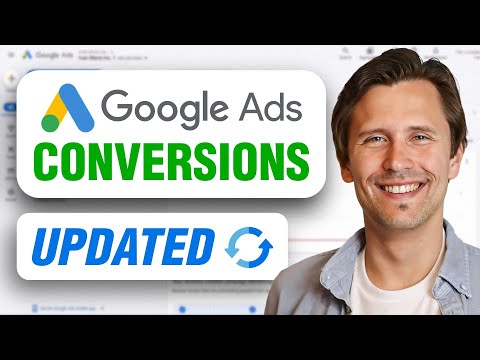Step-by-Step Guide for Setting Up Conversion Tracking in Google Ads

In today’s digital landscape, understanding the effectiveness of your Google Ads campaigns is crucial. Are your ads driving the actions you want, or are they simply eating into your budget? That’s where conversion tracking comes in, offering a window into your customers’ interactions.
Setting up conversion tracking might seem daunting, but it’s essential for measuring the success of your advertising efforts. It allows you to track key actions like purchases, sign-ups, and downloads, giving you a clearer picture of how your users engage with your brand.
With the right setup, you gain insights into what’s working, enabling more informed decisions and strategic adjustments. In this guide, we’ll walk you through a straightforward process to set up conversion tracking in Google Ads.
Let’s demystify conversion tracking, ensuring you have the tools to optimize your advertising campaigns for success. Whether you’re a seasoned marketer or a beginner, these steps will help you harness the full potential of your Google Ads.
Introduction to Conversion Tracking in Google Ads
Conversion tracking in Google Ads is all about verifying if your advertising dollars are well-spent. It provides the tools to measure specific actions—conversions—users take after interacting with your ads.
Think of conversions as the goals you want site visitors to achieve, like making a purchase, submitting a contact form, or signing up for a newsletter. With conversion tracking, you get to see which ads and keywords are driving these valuable actions.
Once you implement conversion tracking, data becomes your guiding light. You’ll gain insights into which campaigns are successful and which may need a bit of tweaking. Google Ads uses this data to optimize ad distribution, aiming to get more conversions within your set budget.
By setting up this feature, you position your campaigns for enhanced efficiency and strategic growth. Whether your goals focus on sales, leads, or other crucial interactions, conversion tracking supports informed decision-making, ensuring you’re not just reaching audiences, but engaging them effectively.
Setting Up Conversion Actions
Before diving into the setup, it’s essential to identify the actions you want to track. Common conversion actions include completing a purchase, submitting a lead form, or signing up for a newsletter. Once your goals are clear, you’re ready to start setting up.
Begin by navigating to your Google Ads account. Click on the tools and settings icon at the top right, then go to "Conversions" under the "Measurement" category. Here, you’ll have the option to create a new conversion action.
Choosing Conversion Sources
Google Ads provides several options for conversion sources, such as websites, apps, phone calls, or imported data from other systems. Select the source that aligns with your goals. For most online goals, you’ll choose "Website."
After selecting the source, enter the relevant information, such as the action’s name and the value each conversion represents. This value can be the sale amount or a preset value if generating leads.
With the technical setup underway, you’ll need to install a tracking tag on your website. Google provides easy-to-follow instructions and various tag types to cater to your setup needs, ensuring accurate data collection.
Finally, review your settings to confirm everything aligns with your business objectives. Once verified, your conversion actions will start capturing valuable data, serving as a cornerstone for optimizing your campaign strategies.
Installing Google Ads Conversion Tracking Tag
After setting up your conversion actions, it’s time to install the tracking tag. This snippet of code is what allows Google to see when conversions occur on your website.
You can find your conversion tracking tag by heading back to the "Conversions" section in your Google Ads account. Once there, click on your newly created conversion action. Google will offer you a few options for installation.
Using Google Tag Manager
One popular method for adding tracking tags is Google Tag Manager. This tool simplifies the process by allowing you to manage all your tags from a single interface. Simply add a new tag, select "Google Ads Conversion Tracking," and input your conversion ID and label.
If you aren’t using Google Tag Manager, you can manually add the code to your website. Google provides the HTML code, which should be placed between the <head> tags of the relevant page, such as a purchase confirmation page or thank you page.
Once the tag is in place, test it to ensure it’s firing correctly. Google’s Tag Assistant Chrome extension is a handy tool for verifying your tag’s functionality.
With your conversion tracking tag installed, you’re now ready to gather and analyze crucial conversion data, helping you fine-tune your ad campaigns for peak performance.
Configuring Offline Conversion Tracking
Capturing online conversions is essential, but what if much of your customer engagement happens offline? That’s where offline conversion tracking steps in, bridging the gap between your digital ads and real-world sales or interactions.
To start, you need to collect important customer interaction data. This usually involves linking interactions with your ads to offline sales, often using unique identifiers like customer IDs or conversion import files. Make sure your CRM system is set up to capture these details accurately.
Next, head to your Google Ads account and navigate to the "Conversions" section. Here, you can create a new offline conversion action. Google will guide you on how to structure your data files for upload.
Once your data is formatted correctly, it’s time to import the conversions. You can do this manually by uploading files to Google Ads, or through the Google Ads API for automation. This import helps attribute offline events to specific ad interactions.
Remember, the key to effective offline tracking is maintaining precise and up-to-date records of customer interactions. This level of tracking not only improves your ad targeting but also provides a comprehensive view of your campaign’s real-world impact.

Utilizing Conversion Data in Google Ads
With conversion tracking set up and data flowing in, the next step is making that data work for you. The insights gained from conversion data can significantly influence the effectiveness of your advertising strategies.
Start by analyzing which keywords, ads, and campaigns drive the most valuable actions. This analysis helps you understand what’s working so well that you might enhance its reach, and what isn’t, which may need adjustments. Pay close attention to metrics like conversion rate and cost per conversion.
Make informed decisions to allocate your budget more effectively. Perhaps certain campaigns yield better returns, suggesting a shift in resources for higher efficiency. This optimization can lead to improved return on investment (ROI).
Additionally, consider using automated bidding strategies powered by your conversion data. Google Ads offers Smart Bidding options like Target CPA or Target ROAS that utilize machine learning to adjust bids for each auction, maximizing conversions or conversion value.
Lastly, use insights to refine audience targeting. Create custom audiences based on behaviors to reach those most likely to convert. Analyzing conversion data not only refines current strategies but also sets the stage for future campaign success, ensuring your efforts are always aligned with your business goals.
Advanced Tracking Implementation Strategies
For advertisers looking to elevate their Google Ads campaigns, advanced tracking strategies offer a deeper dive into user behavior and engagement. These strategies go beyond basic implementation, providing nuanced insights to further optimize performance.
Consider implementing cross-device tracking to capture users who interact with your ads across multiple devices. Google Ads can link interactions from different devices, offering a cohesive view of the customer journey. This insight is crucial for understanding how different touchpoints contribute to conversions.
Another tactic is event tracking, which involves monitoring specific interactions within your website or app that aren’t classified as conversions but are still valuable. Events like video views, social shares, or button clicks offer additional context about user engagement and can inform your conversion optimization strategies.
Integrating Google Analytics with your Google Ads account also enhances your tracking capabilities. This integration provides more detailed behavioral data, including how long users stay on your site and their paths before converting. These insights can refine targeting and content strategies, ultimately enhancing user experience and conversion rates.
Advanced tracking empowers advertisers to not only monitor surface-level results but also to delve into the intricate patterns that drive customer interactions, paving the way for more effective and efficient campaign strategies.
Measuring & Improving Conversion Rate
Understanding your conversion rate is crucial for gauging the effectiveness of your Google Ads campaigns. This metric, calculated by dividing total conversions by the number of ad interactions, helps measure how well your ads encourage desired actions.
A clear picture of your conversion rate allows you to benchmark performance and identify areas for improvement. Start by analyzing your top-performing ads to understand what resonates with your audience. Look for common traits, such as ad messaging or visuals, that could be amplified across other campaigns.
To boost your conversion rate, consider conducting A/B tests with different ad elements. Experiment with variations in headlines, call-to-action language, or landing page design. These tests help identify factors that drive conversions, allowing you to refine your entire advertising strategy for better results.
Additionally, focus on optimizing the landing pages users reach after clicking your ads. Ensure they’re fast-loading, mobile-friendly, and seamlessly aligned with your ad’s promise. Clear and concise content, along with an obvious call-to-action, can significantly enhance user experience and conversion likelihood.
Regular performance reviews and strategic adjustments based on data insights are key to continuously improving your conversion rate. This ongoing refinement process ensures your campaigns are always reaching their full potential, driving impactful business outcomes.
The Bottom Line: Optimizing Your Conversion Tracking Efforts
Conversion tracking in Google Ads is not just a tool; it’s your gateway to understanding and improving the effectiveness of your advertising campaigns. By carefully setting up conversion actions, installing tracking tags, and configuring offline conversions, you’re well on your way to gleaning actionable insights.
Utilizing your conversion data wisely is where the real magic happens. It enables strategic budgeting and bids, helping you focus resources where they matter most. Remember, it’s not just about gathering data but about interpreting it to make informed decisions that drive better results.
Not only that, but, advancing your tracking strategies empowers you with a more comprehensive view of user interactions across devices and platforms. This holistic approach ensures you’re not leaving any stones unturned and allows for precision in targeting and messaging.
Don’t forget, improving your conversion rate is an ongoing journey. Through continuous testing and optimization, such as refining landing pages and experimenting with ad elements, you can make incremental improvements that add up over time.
In conclusion, the key to optimal conversion tracking lies in balancing the art and science of advertising. Use your data-driven insights to fuel creativity and innovation in your strategy. With a solid foundation and a willingness to adapt, your campaigns will not only reach their targets but also elevate your brand to new heights in the competitive landscape. Keep testing, keep learning, and you’ll find that conversion success is not just attainable—it’s sustainable.



